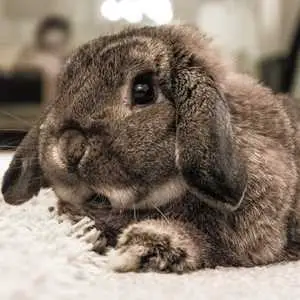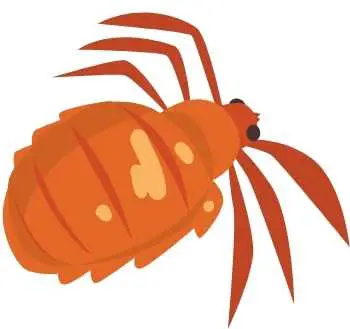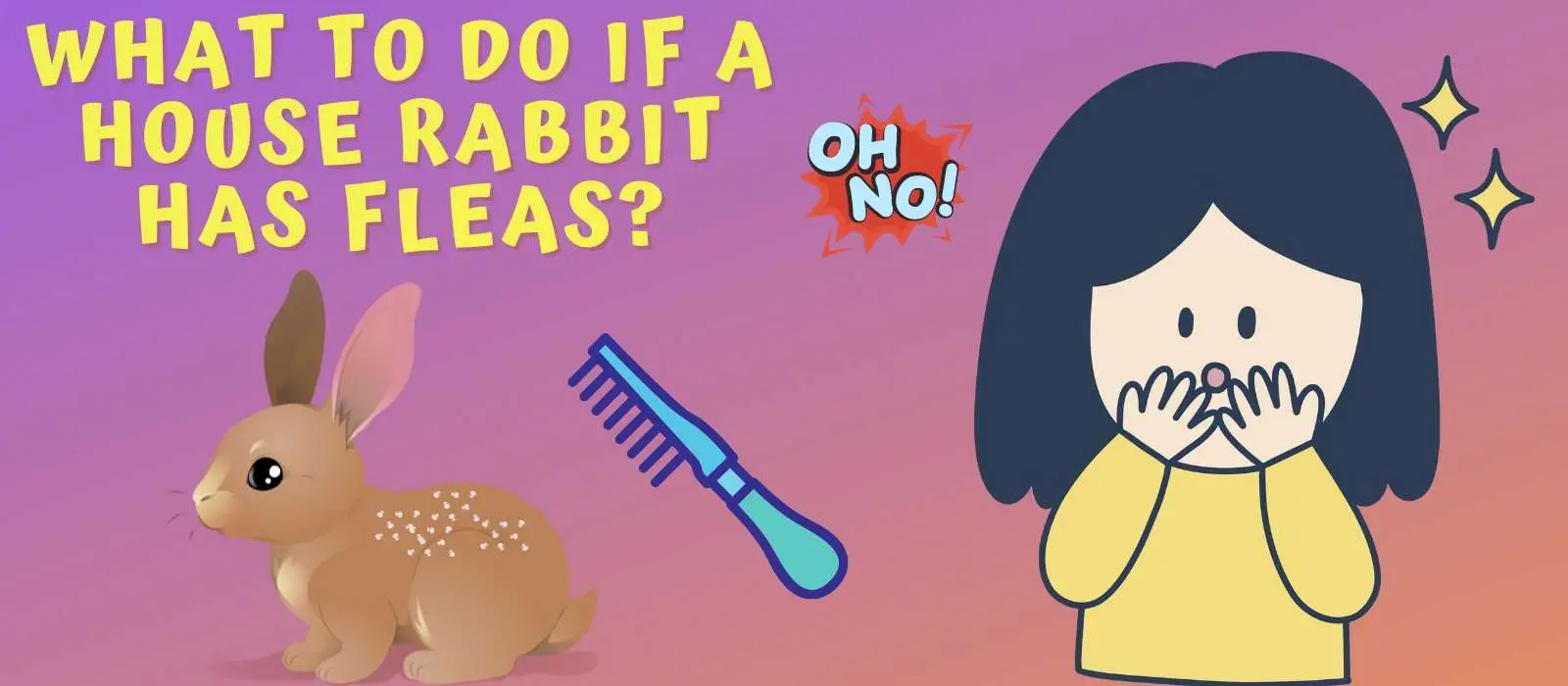Quick Answer: Why is my rabbit losing so much fur?
Molting and seasonal fur loss are perfectly normal. Rabbits often molt in big tufts, but should not go bald! Pregnancy-Hormone changes during pregnancy can cause alopecia or an undercoat pulling out to nest for moms who have babies on the way.
Long description of this topic below
Shedding or Molting in Rabbits: Tips to Deal with Fur Loss
Bunnies are lagomorphs having thick, soft coats. Some specific breeds such as Angoras, Lionheads, and American Fuzzy Lops have very dense, colorful, and glossy fur.
The naturally gorgeous coat is a sure sign of good skin and hair health. However, these furry creatures lose hair during the shedding season. This is perfectly all right. But if your cutie is losing patches of fur throughout the year, it can be a cause of concern.
In this blog post, we will discuss everything about rabbit shedding. After reading till the end, you will know:
What is normal and abnormal shedding
Symptoms of unusual fur loss in bunnies
Causes of excessive shedding
Remedies for shedding rabbits
When do Rabbits Lose Hairs (Normal Shedding)
Molting (also called shedding) is a seasonal phenomenon occurring at least twice a year. Some species also go through two additional molting seasons. Seasonal molting can happen for 2-6 weeks.
Spring and fall are winter and summer coat-molting seasons for bunnies.
Rabbits start losing fur from the neck region, reaching down the stomach, tail, etc.
Baby buns replace hair three times during the first year of growth and maturity. If your bunny is undergoing normal shedding, it will have clean bald patches.
You don’t have to worry about seasonal fur loss. The hair will regrow again.
Abnormal Fur Loss in Bunnies
If your rabbit is shedding massively even after the molting season, it may be due to an underlying problem. Hair loss is also an issue if the empty patches appear flaky, red, swollen, or itchy.
What Causes Excessive Hair Loss in Rabbits
Ongoing heavy shedding may happen due to one or more health and behavioral complications in rabbits.
Parasite and Bacterial Influx

Parasite infestation in pet rabbits is a serious matter. Domestic bunnies live with other inmates indoors throughout the day. If attacked by fleas, mange mites, or fur mites, it can be problematic for the family members.
Don’t panic if your rabbit is suffering from parasite or bacterial infections. Luckily, there are treatment facilities and medicines to get rid of infections in small pets.
Housing rabbits in warm and humid surroundings can cause bacterial infections and flystrike.
Indoor rabbits are mostly infested by:
- Mange mites/itch mites- Sarcoptes scabies
- Fur mites- Cheyletiella parasitivorax
- Ear canker mites- Psoroptes cuniculi
- Feather mites/Tropical rat mites- Ornithonyssus spp.
- Burrowing mange mites- Trixacarus caviae
- Ringworm fungus
Oral Problems
Some fur loss problems are related to dental health in rabbits. Tooth infections, molar abscesses, or spurs can make buns drool or salivate. Excessive saliva secretion results in skin wetness and burning.
Fur loss from dental problems rarely happens in young bunnies. Such symptoms are evident in rabbits aged 5 years old or above.
Overgrooming (Stress and Boredom)
The reasons for severe stress may vary in rabbits. Some common issues causing stress and anxiety are:
- Weaning period
- At a new habitat
- Bonding with other pets
- Contact with new people
- Living in a dirty space
As an immediate reaction, a stressed-out bunny may start pulling out hairs from the regions it has easy access to (front legs). Gradually, you may see alopecia patches in other parts of the body.
Nesting Behavior
Pregnant rabbits pull apart volumes of hair from the chest and sides to line up a nesting place. They may also tear up pillows and other items to gather some fillers for this purpose.
If your female bunny is not pregnant and still showing signs of nesting, she is experiencing a false pregnancy.
Urinary Tract Disorder
Rabbits can suffer urine leakage due to bladder sludge/stones or urinary tract infections. The area around the belly, feet, tail, and between the hind legs can become wet if a bun has urine leakage issues. Constant wetness due to acidic urine can burn the skin, making it raw and reddish.
Poor Nutrition
Thriving on a low-fiber diet can cause a deficiency of essential nutrients. Bunnies may develop the habit of pulling their hair due to malnutrition. Lack of fiber in the diet can make them overweight or obese within a short time. Obese rabbits have difficulty in scratching or self-grooming. Over time, these buns may become vexed and start barbering.
Genetic Anomaly
If a rabbit is hairless throughout its lifespan, it may be due to a gene anomaly. This is rare but poses multiple health complications, often leading to premature death. Nurturing these bunnies can be challenging in the presence of siblings or other pets.
Hormonal Imbalances
Fur loss due to hormone imbalance can be identified after veterinary diagnosis and blood tests. Improper functioning of the endocrine system and thyroid glands can also trigger continuous shedding.
Fights with Other Rabbits
Some indoor bunnies are annoyed about sharing space with fellow buns inside the same enclosure. When a new companion is introduced into the habitat, it may fight to dominate space. Serious fights occur when the pet owner is away.
Symptoms of Abnormal Shedding in Bunnies
Plenty of furs are scattered in the habitat and the playpen is the first sign of heavy molting. However, there are several other symptoms and consequences to understand if your bunny loses too many hairs. Watch out for small or large empty patches on the body.
Parasite Infestation

Rabbits attacked by mange mites may have white crusts around the eyes, nose, mouth, and toes. These crusts may liberate an unpleasant musky odor.
If crusts and scabs have formed near the ear canals, your bun has ear cankers.
This can be painful for bunnies prompting them to scratch or flap their ears harshly, shake their head, etc.
Look for fur loss around the ears, eye muscle spasms, etc.
Rabbits losing hair due to fur mites may show minor signs of flaking and bald patches. However, rat mites and burrowing mange mites can be discomforting and painful, causing severe itchiness and patchy fur loss.
Partial alopecia caused by ringworm fungus is easy to identify. The empty patches on the face, ears, and head have red lesions.
Dental Problems
Hair Loss in the dewlap folds, under the chin, and down the chest occurs due to saliva burn. Rabbits suffering from dental problems may also have wet skin under the chest.
Salivating bunnies may chew hairs around the wet areas and sores due to irritation or itchiness.
Fighting
If you have more than one bunny inside the same rabbit enclosure, watch for cuts, patches of pulled-out hairs, and scabs. These signs indicate severe fighting.
Sometimes, there are no visible symptoms of shedding. If your bun loses hair in volume, it may be due to an underlying problem, such as hormonal imbalances or nutrition deficiency. Medical diagnosis is recommended to identify the issues.
Diagnosis and Treatment for Abnormal Molting
Home remedies and guesswork can worsen the problems. Take your bunny to a vet clinic for comprehensive examination and treatment. Some parasites such as flystrike eggs and fur mites are difficult to identify.
Veterinarians can detect the problem and type of shedding based on the medical, blood, and urine test reports.
Parasitic infections are easy to treat with the prescribed medication. Vets recommend antibiotics for urinary tract infections. A tooth filling is necessary to treat molar spurs.
For certain conditions, such as false pregnancy and fighting, spaying and neutering are required.
Buns overgrooming due to stress and boredom require hygienic and playful environments. Keeping them busy with chew-safe rabbit toys such as activity tables, hanging toys, or apple sticks can rejuvenate their mood.
Preventive Care Measures for Shedding

Certain infections and health problems related to molting may cause chronic pain. However, there are several measures to avoid complications.
Following routine best practices in rabbit care can keep most of these problems at bay.
- Brush the bunny coat regularly to get rid of loose hairs
- Clip the toenails in 1-2 months
- Clean the rabbit’s ears every week
- Do spot cleaning if ever your bun gets dirty
- Take your small pet for a regular health checkup at a vet clinic
- Clean the rabbit habitat regularly
- Monitor them closely to detect the early signs
Note: Rabbits are good at cleaning their body. Never attempt to give them a bath. It can be risky and life-threatening. Do spot cleaning if required.
Conclusion
Rabbits keep shedding a small amount of hair, just like humans. This is normal. But they will molt in volumes while changing their seasonal coat.
Buns are clean and well-groomed creatures. However, they need routine grooming to stay healthy.
If you identify abnormal shedding, this can be a disease or a severe health issue. Early diagnosis and treatment help alleviate the distress and keep your bunny happy.





